The steady decline of non-renewable resources means we will have to reuse most building materials in the future. But how can we make sure all the pieces go together?
Written by Henning Prytz Poulsen / Pressenytt
«At some point in the future we will have exhausted all reserves, and all existing materials are either in circulation or lying on a dump. We are no more than a couple of decades away from this when it comes to zinc, to name but one example. With iron we have more time, but not an infinite amount of it. We need to figure out how to reuse materials, whether we want to or not», says Erik Ege, architect and partner at DARK Arkitekter, part of the multidisciplinary DARK Design Group.
Esbjørn Kjell and Ingvild Høgseth, both architects and colleagues at DARK Arkitekter, join the conversation. While Ege and Kjell are both seasoned architects, Høgseth recently completed her architecture degree at the Norwegian University of Science and Technology (NTNU), where she, in her thesis, specialised in circular architecture. Increasing awareness and knowledge about reused materials with both colleagues and clients is part of her role.
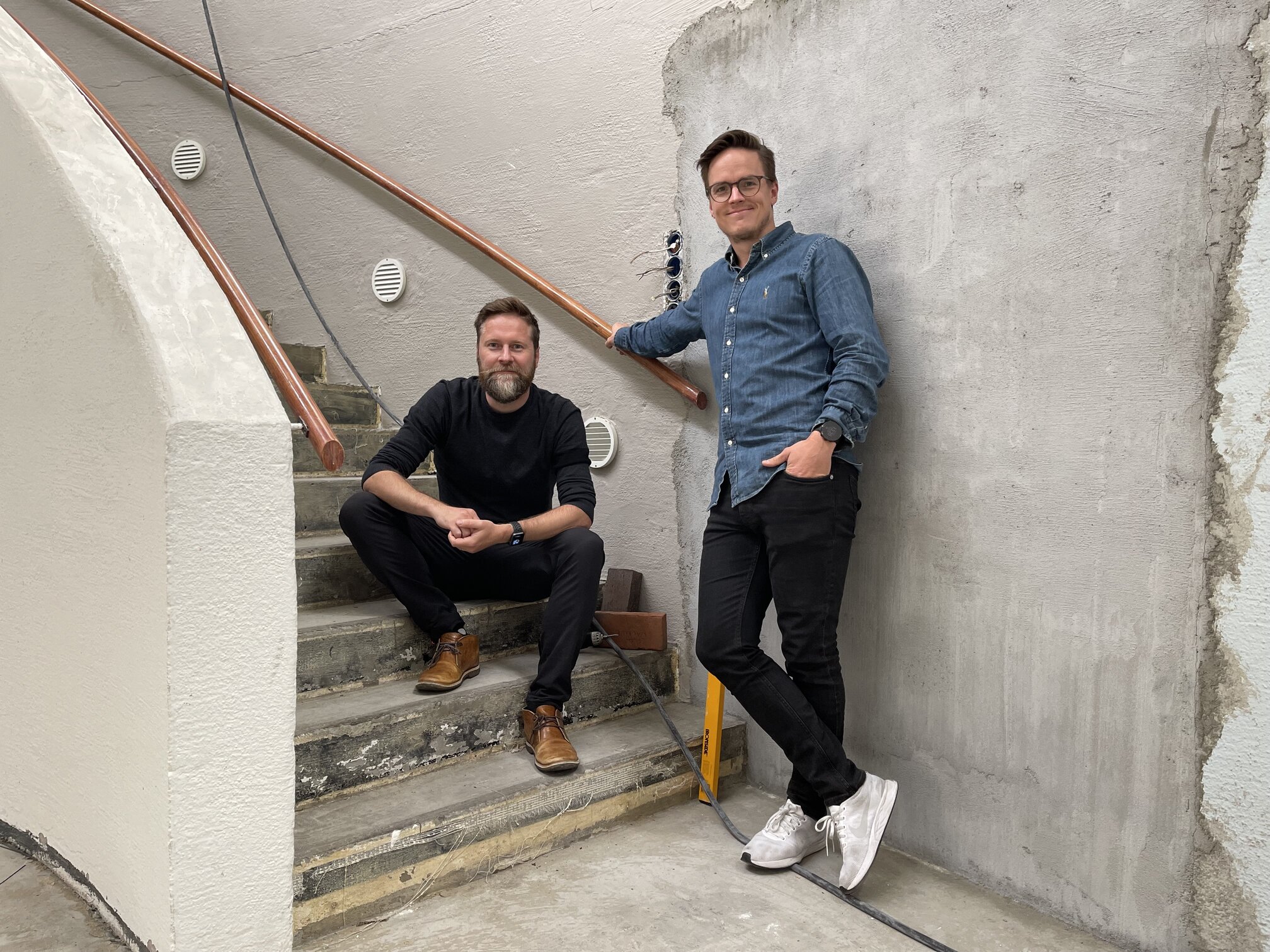
Esbjørn Kjell and Erik Ege from DARK Arkitekter.
«We are starting to see the way forward in architecture. The focus has gradually shifted from rehabilitation projects to actually examining the materials and decide how to put them to use. Lendager Group in Copenhagen has certainly led the way here in the Nordics, and today we are seeing possibilities that were just not there a few years ago», she says.
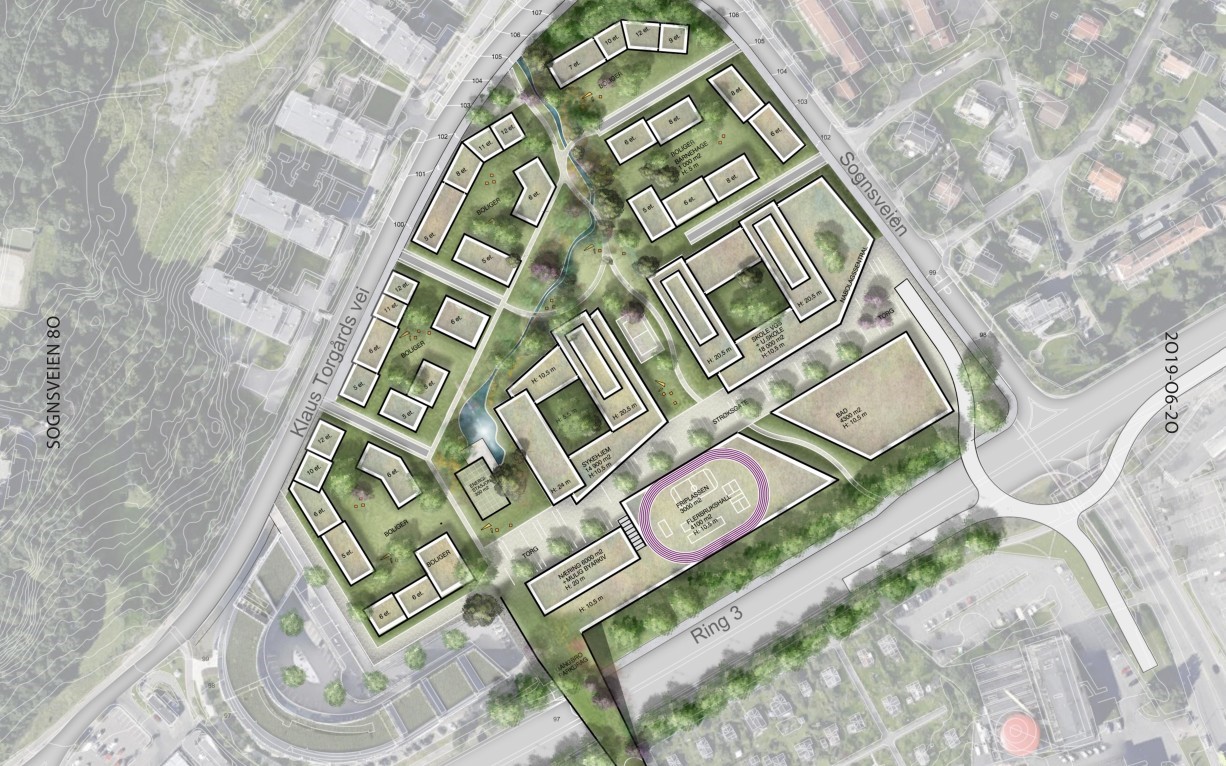
Sognsveien 80-90 may very well become a jewel in the crown of Oslo’s climate ambitions.
Back in 2019 DARK Arkitekter won the tender for the prestigious «Sognsveien 80-90», a rehabilitation and development project situated north-west of the Oslo city centre. The winning concept was simply named «Gjenbruk», which translates to «Reuse». While some of the details of project that is between 50,000 and 100,000 square metre large are yet undecided – it is up for ratification in the first half of 2022 – it is likely to become a flagship for sustainable and circular architecture for the entire Oslo municipality.
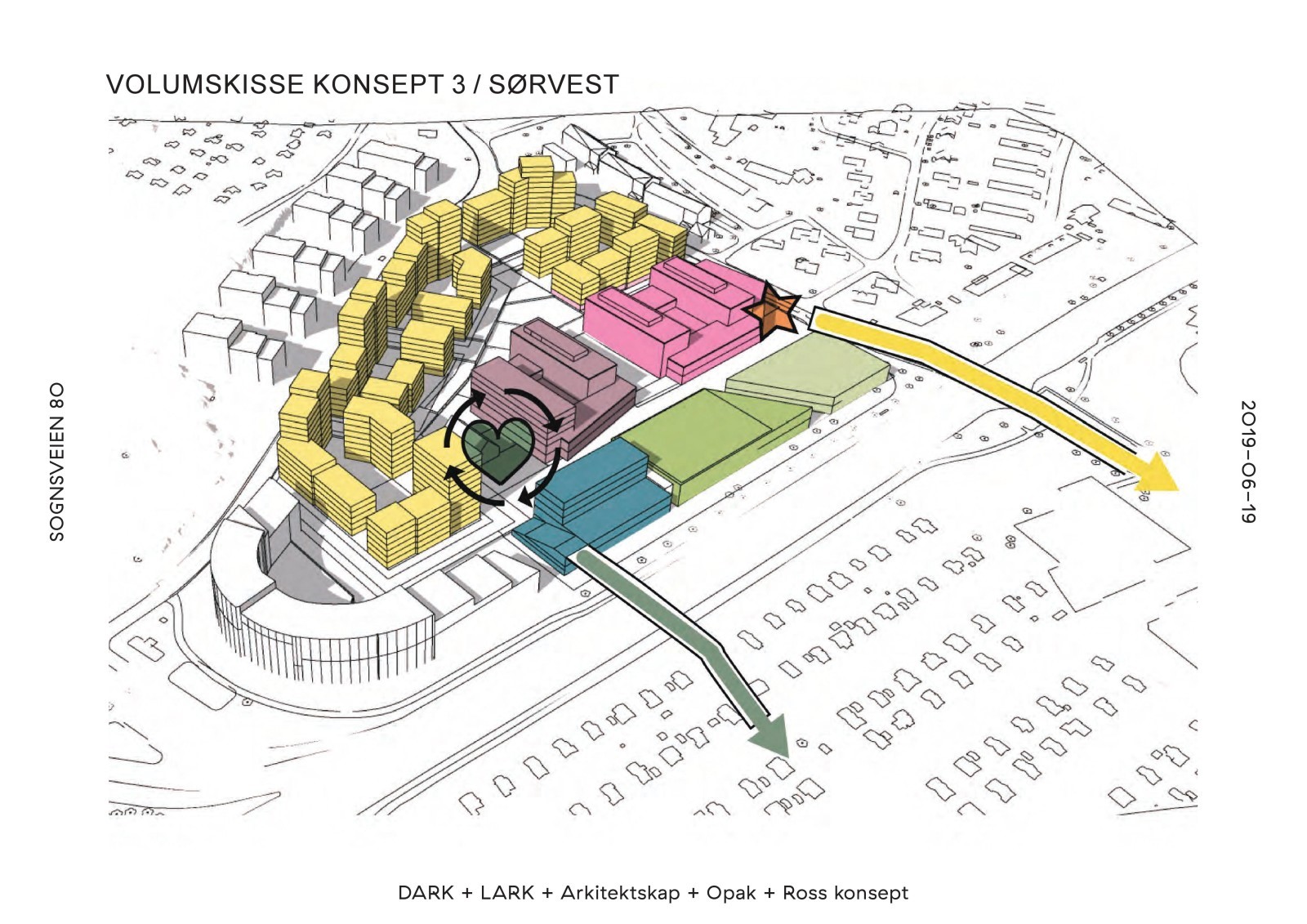
With the proposed “Gjenbruk” plan, DARK Arkitekter are putting reused materials and structures at the centre of a new district in Oslo.
«There have not really been any projects of this size with the same ambition or emphasis on reusability before. The full scope of it all is still not completely decided, but hopefully it will showcase the city’s climate ambitions for generations of new architects, planners and builders», says Esbjörn Kjell, who has the role of project manager.
Because the municipality owns thousands of properties of various types, sizes and states of function and repair, it could give DARK Arkitekter an opportunity to harvest materials and structures for Sognsveien 80-90 from a number of sources.
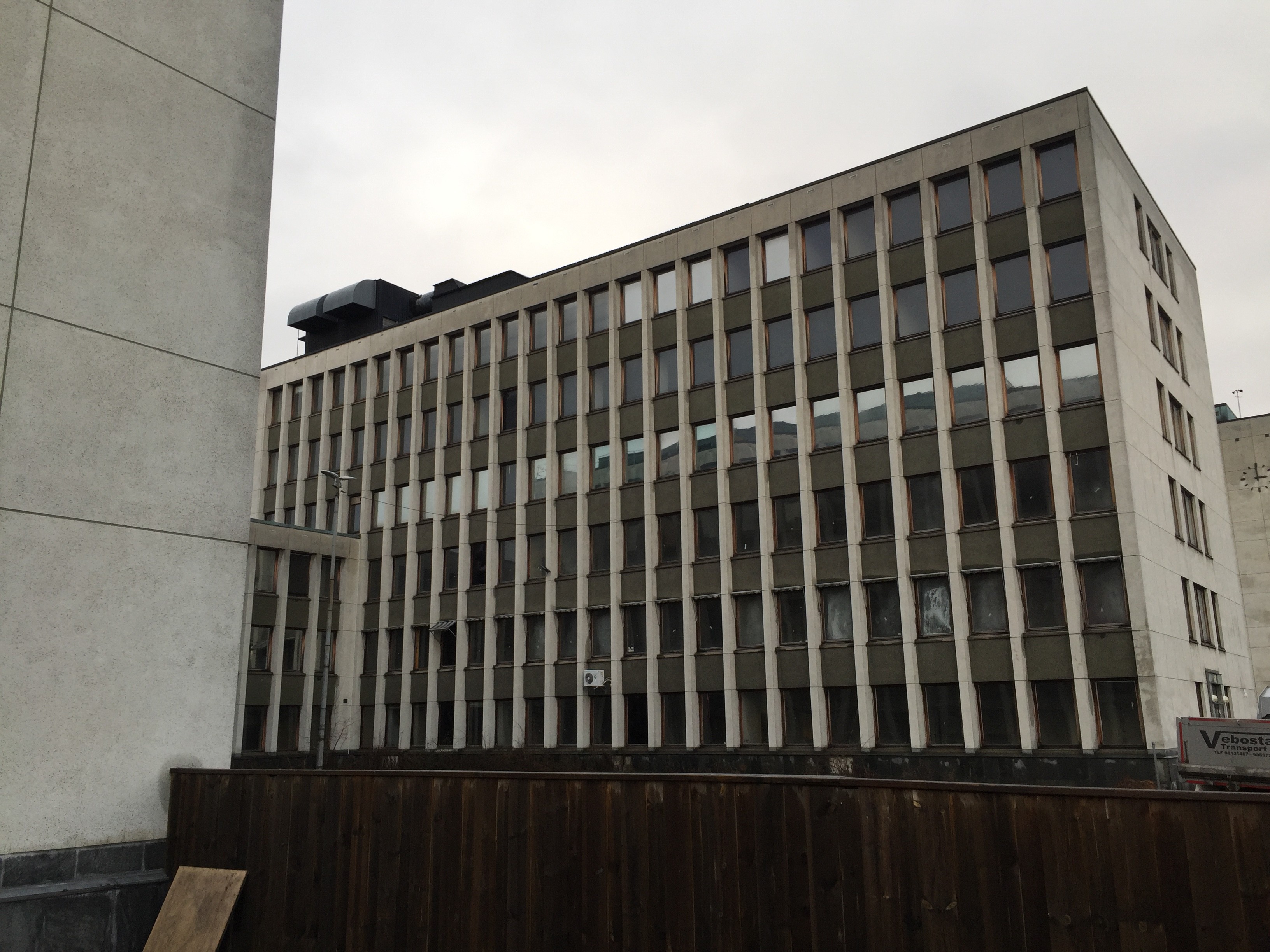
The architects plan to reuse several of the obsolete buildings that currently occupy the Sognsveien 80-90 property.
At another project, Stortorvet 7, DARK Arkitekter are rehabilitating an entire city block just a stone’s throw away from Parliament. The aim is to create an open and engaging use of a prominent public place in Oslo, while at the same time enhancing the architectural dignity of the buildings. Reused, locally sourced materials are playing an important role in preserving the identity and qualities of the property – to connect the past with the present.
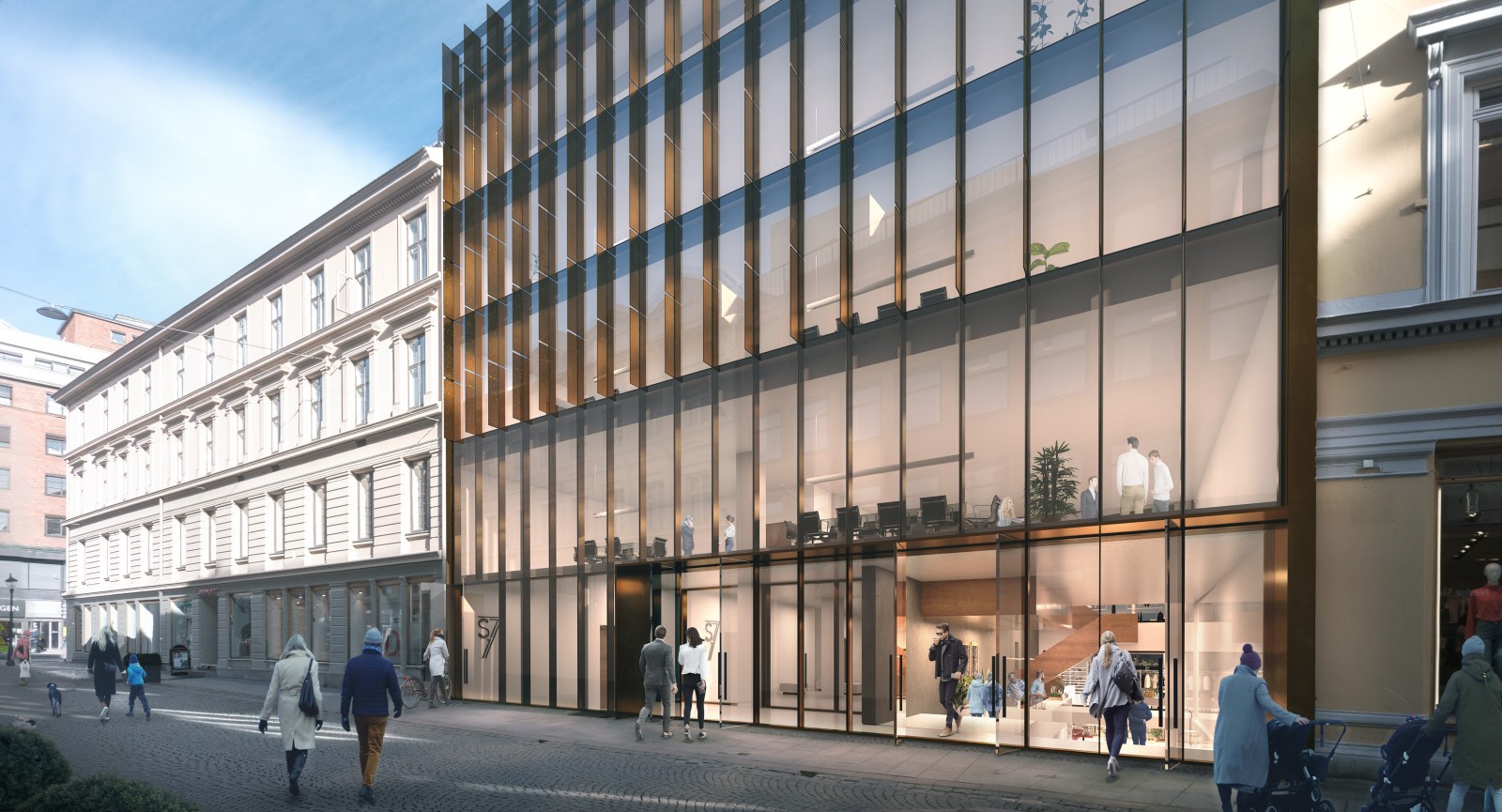
DARK have all the angles covered as they work to renew and rejuvenate Stortorvet 7.
“Nothing lasts forever, and the DARK architects are convinced we need to start planning and constructing buildings with the aim that we will one day need to make adjustments for future needs, and in some cases even dismantle them, piece by piece. Some progress has been made in recent years, with more materials being bolted instead of welded together.”
«We architects already use 3D models for planning and building. If these models are digital similarities of projects, they can be used to plan the dismantle process. These digital twins will contain information of materials in the buildings, and help us to identify and harvest materials from obsolete buildings. This can be resource-intensive», Ingvild Høgseth says.
Copyright for all the pictures and illustrations: © DARK Arkitekter
Want to hear more about this topic? Be there, at DARK arkitekter's lecture on 29th September at ARCHITECT@WORK Oslo. Here you can find more information.